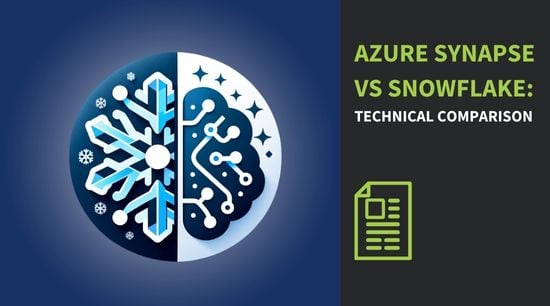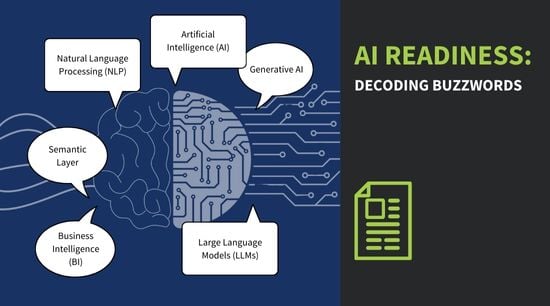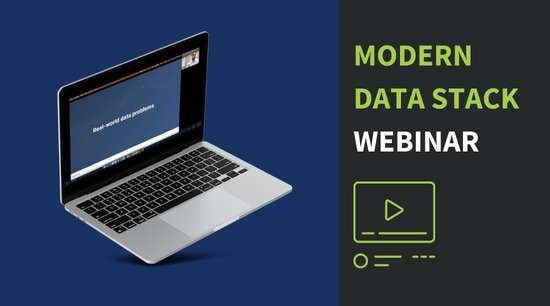Modern Data Stack | SME Solutions Group
Modern Data Stack Vs. Traditional Data Stack
As data becomes more complex, organizations are on the lookout for swifter, more efficient, and cost-effective methods to handle and scrutinize it. Over the past few years, cloud-based data warehouses have altered data processing with their cutting-edge massively parallel processing abilities and SQL support. This advancement has paved the way for a range of cloud-native data tools that are user-friendly, adaptable, and budget-friendly.
Advanced data solutions, such as SME's Modern Data Stack, include a collection of tools and technologies built for the cloud, revolutionizing how enterprises tackle data management.
Transform Your Data Management and Analysis with Advanced Data Solutions
We provide a comprehensive suite of modern data stack tools and enterprise data services to help organizations transform their data strategy, focusing on data management and analysis capabilities. Our cloud-based tools enable organizations to collect, integrate, warehouse, transform, and consume data more efficiently and accurately than traditional stacks, while our team of experienced data consultants provide expert guidance and support to ensure the successful implementation and adoption of advanced data solutions. Whether you're just starting out or looking to upgrade your existing data infrastructure, we have the tools and expertise to help you achieve your data goals.
Modern vs Traditional Data Stacks
The traditional data stack refers to on-premises hardware, relational databases, ETL tools, and BI software. The modern data stack utilizes cloud-based data warehouses, integration and transformation tools, modern data solutions, and modern BI and visualization tools. Modern stacks can handle larger volumes of data and integrate data in real-time, providing a more agile and cost-effective solution for data management and analysis.
.jpg)
From Manual to Automated
The modern data stack utilizes data automation tools, specifically cloud-based tools, to connect to various sources and pull data into a central location in near real-time. This approach provides a more efficient and accurate way to collect and transform data compared to traditional data stacks, which often involve manual processes and separate tools for data integration and transformation.
Cloud-Based Integration for Real-Time Data Handling
The modern data stack leverages cloud-based integration tools to handle large volumes of data from various sources in real-time. It incorporates modern data integration techniques, enabling seamless connectivity and collaboration between diverse data sources. This approach not only facilitates the integration of cloud-based sources that may not have been accessible in the traditional stack but also emphasizes a more flexible and efficient methodology for managing data across the entire stack. Modern data integration plays a pivotal role in ensuring the smooth flow of information, supporting organizations in making informed decisions based on up-to-date and consolidated data.
Flexible and Cost-Effective
The modern data stack uses cloud-based data warehouses that are more scalable, flexible, and cost-effective than the traditional stack's on-premises hardware. Cloud-based data warehouses also offer advanced analytics capabilities, providing a more efficient way to store, process, and analyze data. Leveraging the expertise of a data consultant, including data warehousing consulting, can further optimize these capabilities, ensuring you maximize the value of your data infrastructure.
Extract, Load, Transform
The modern data stack's cloud-based data transformation tools utilize the ELT paradigm to push the processing duties to the cloud data warehouse. These transformations can be accomplished via no-code/low-code workflows that provide a more user-friendly interface for faster data transformation or modularized SQL/Python that gives advanced data engineers more control. They also offer built-in data validation and lineage tracking to ensure data quality and traceability. This is in contrast to the traditional data stack, where data transformations are typically done inside legacy ETL tools which require more hardware and therefore cost more.
Democratizing Data Insights
The modern data stack allows for self-service data consumption through user-friendly, cloud-based data visualization and reporting tools that democratize access to data insights. Traditional stacks typically limit data consumption to a select group of data experts who use specialized tools.
Self-Service Discovery of Trusted Data Assets
The modern data stack integrates data governance tools with other components, providing a more comprehensive view of data across the organization. Advanced analytics capabilities detect and prevent data quality issues before they impact business operations, ensuring consistent data access, security, and compliance.
Data Automation Tools and Data Engineering Consulting
In today's dynamic business landscape, harnessing the power of data is not just an advantage; it's a necessity. At SME Solutions Group, we specialize in empowering businesses with cutting-edge data automation tools and expert data engineering consulting services to improve efficiency, ensure data accuracy and consistency, scale effectively, maintain compliance, and gain a competitive advantage through data-driven innovation.
Data Automation Tools: Streamline your operations and drive efficiency with our state-of-the-art data automation tools. From data collection and processing to analysis and visualization, we provide tailored solutions that fit your unique business needs. Say goodbye to manual processes and hello to streamlined workflows that accelerate your growth.
Expert Data Engineering Consulting: Our team of seasoned data engineers is here to guide you every step of the way. Whether you're just starting your data journey or looking to optimize existing systems, our consultants offer unparalleled expertise and strategic insights. From architecture design to implementation and maintenance, we're committed to delivering results that drive tangible business outcomes.
Efficiency and Productivity:
Data automation tools streamline repetitive tasks such as data collection, processing, and analysis, reducing the need for manual intervention. This not only saves time but also increases overall efficiency and productivity within an organization. With automation, teams can focus their efforts on more strategic initiatives rather than mundane data management tasks.
Accuracy and Consistency:
Manual data processes are prone to errors and inconsistencies, which can lead to unreliable insights and decisions. By leveraging automation tools, businesses can ensure data accuracy and consistency, thereby enhancing the reliability of their analyses and decision-making processes.
Scalability:
As businesses grow, so does the volume and complexity of their data. A well-designed data automation framework, coupled with expert data engineering consulting, provides scalability to handle large and diverse datasets effectively. This ensures that the data infrastructure can adapt to evolving business needs without compromising performance or reliability.
Building long-lasting relationships through happy customers.
%20(7).png?width=180&height=100&name=Copy%20of%20Untitled%20Design%20(100%20%C3%97%2050%20px)%20(7).png)
%20(8).png?width=180&height=100&name=Copy%20of%20Untitled%20Design%20(100%20%C3%97%2050%20px)%20(8).png)
%20(9).png?width=180&height=100&name=Copy%20of%20Untitled%20Design%20(100%20%C3%97%2050%20px)%20(9).png)
%20(10).png?width=180&height=100&name=Copy%20of%20Untitled%20Design%20(100%20%C3%97%2050%20px)%20(10).png)
%20(11).png?width=180&height=100&name=Copy%20of%20Untitled%20Design%20(100%20%C3%97%2050%20px)%20(11).png)
%20(12).png?width=180&height=100&name=Copy%20of%20Untitled%20Design%20(100%20%C3%97%2050%20px)%20(12).png)
%20(13).png?width=180&height=100&name=Copy%20of%20Untitled%20Design%20(100%20%C3%97%2050%20px)%20(13).png)
%20(14).png?width=180&height=100&name=Copy%20of%20Untitled%20Design%20(100%20%C3%97%2050%20px)%20(14).png)
CIO of Ideal Agent
Zavier Rodriguez
We’re excited to implement SME’s technology to better integrate our disparate data and insights. Digital Transformation is not just about the technology or software, it’s about the use case and need. It includes data governance, data integrity and data trust, as well as providing data literacy and excited for SME to bridge the gap.

Associate Director Qlik Center of Excellence
Johnathon Repass
Working with SME has been a wonderful experience. Their consulting services provide a wealth of knowledge and extensive expertise in the BI and data analytics space. Their relatively smaller size and quick response times makes them a great asset. I look forward to our continued partnership.
Pedernales Electric Cooperative, Inc.
Bobby Bryant
From the start, everyone has always been very helpful, friendly, and knowledgeable. Whether we had questions about licensing or future product releases, we always received quick feedback. I never felt like they were ever trying to sell me anything. Their approach is consultative and they really try to get to know their clients to offer the right guidance. Through this approach, they introduced us to ThoughtSpot and we attended our first conference with them last year. I really appreciate the great work that SME does and would definitely recommend them to anybody who is looking to get a high return on their BI investment.

USply
Luiz Amaral
I have nothing but good things to say about SME and would certainly recommend them. We have implemented Qlik throughout upper management so if the product goes down, the company stops. Even though SME is growing, I never felt any less personalized attention or commitment from them. I truly appreciate their teaming and partnership.

Hillsborough County Tax Collector
Brenden Chiaramonte
From server configurations and data modeling, all the way through application deployment and governance, we are confident that we have the best practices in place to provide a long-term business intelligence solution that meets our expectations and future growth needs.
Vice President, Americas at ThoughtSpot
Ryan Heinig
The partnership between ThoughtSpot and SME Solutions Group empowers customers to utilize ThoughtSpot's AI-driven analytics and tap into SME's extensive expertise and knowledge throughout the entire data value chain, resulting in insights from their modern data stack at a much faster rate.
VP Alliances & Channel Partners at data.world
Daniel Shah
SME Solutions Group delivers exceptional services working collaboratively to achieve outstanding outcomes for our joint customers. Their partnership approach combines expertise, dedication, and seamless implementation, ensuring that our clients thrive and surpass their business goals.

SVP | Technology & Innovation, Vinik Sports Group
Andrew McIntyre
SME Solutions Group’s deep knowledge of Snowflake and AWS allowed us to streamline our cloud data migration project. Their guidance and support were invaluable in helping us navigate the complexities of the cloud environment and make informed decisions that aligned with our business goals. Through their implementation strategies and focus on execution, we were able to seamlessly transition our data infrastructure to the cloud, resulting in improved scalability, performance, and cost-efficiency..
Featured Resources
-
.jpg?quality=low&width=550&height=306&name=Making%20Data%20Pipelines%20Faster%20(1).jpg) CASE STUDY
CASE STUDY
MAKING DATA PIPELINES FASTERObsolete legacy systems posed significant challenges, impeding the customer's ability to fully utilize their data assets and hindering their path to operational excellence and innovation.
-
 WHITE PAPER
WHITE PAPER
SYNAPSE VS SNOWFLAKE TECHNICAL COMPARISONThe key distinctions and factors that should guide your choice between these powerful platforms, tailored to your specific technical requirements.
-
 WHITE PAPER
WHITE PAPER
DBT CORE VS. DBT CLOUD: WHICH IS RIGHT FOR YOU?Discover the key differences between dbt Core and dbt Cloud, and determine which one is the best fit for your data transformation needs.
-
 WHITE PAPER
WHITE PAPER
AI READINESS: DECODING BUZZWORDS LIKE NLP & SEMANTIC LAYERBetter understand terms like Natural Language Processing, so you can confidently evaluate your AI readiness.
-
 WEBINAR
WEBINAR
BRIDGE DATA TRUST GAP WITH INSIGHTS AND DATA GOVERNANCEEmpower teams with a modern data stack using solutions like Snowflake, ThoughtSpot, and data.world.
-
%20(8)-2.jpg?width=550&height=306&name=RESOURCE%20IMAGES%20(550%20%C3%97%20306%20px)%20(8)-2.jpg) CUSTOMER STORY
CUSTOMER STORY
BUILDING USER CONFIDENCE WHILE REDUCING CLOUD COMPUTING COSTSKforce migrated from costly, legacy ETL processes to a modern approach that has widespread positive impacts on the business.
-
%20(57).jpg?width=618&height=344&name=RESOURCE%20IMAGES%20(550%20%C3%97%20306%20px)%20(57).jpg) EBOOK
EBOOK
MODERN CLOUD DATA WAREHOUSES TO THE RESCUEBig data is becoming more diverse, distributed, and dynamic. This strains your data warehouse and existing BI processes.
-
%20(41).jpg?width=618&height=344&name=RESOURCE%20IMAGES%20(550%20%C3%97%20306%20px)%20(41).jpg) CASE STUDY
CASE STUDY
DATA-FIRST APPROACH TO INVENTORY ANALYTICSAn inventory system can provide unparalleled insights into customer behavior, product performance, and channel performance.
-
%20(66).jpg?width=550&height=306&name=RESOURCE%20IMAGES%20(550%20%C3%97%20306%20px)%20(66).jpg) CUSTOMER STORY
CUSTOMER STORY
DATA ENGINEERING FOR FRAUD ANALYSISCase study on utilizing Azure Data Factory and Snowflake to improve time to insight for potential fraud.
-
%20(44).jpg?width=618&height=344&name=RESOURCE%20IMAGES%20(550%20%C3%97%20306%20px)%20(44).jpg) CUSTOMER STORY
CUSTOMER STORY
DIGITAL TRANSFORMATION AND AI IMPLEMENTATIONIdeal Agent is partnering with SME to scale the business, reduce overhead expenses and improve customer experience.
-
%20(42).jpg?width=618&height=344&name=RESOURCE%20IMAGES%20(550%20%C3%97%20306%20px)%20(42).jpg) CASE STUDY
CASE STUDY
CALL CENTER METRICS AND DASHBOARDSProducing actionable results by identifying performance trends, reason for service tickets, and trends in call volume.
-
%20(43).jpg?width=618&height=344&name=RESOURCE%20IMAGES%20(550%20%C3%97%20306%20px)%20(43).jpg) CUSTOMER STORY
CUSTOMER STORY
ACCELERATING FINANCIAL REPORTINGTransforming raw financial data to insights for Port Tampa Bay by pulling in raw data from Great Plains and iSeaports.
-
%20(51).jpg?width=618&height=344&name=RESOURCE%20IMAGES%20(550%20%C3%97%20306%20px)%20(51).jpg) REPORT
REPORT
CHECKLIST REPORT, CLOUD DATA WAREHOUSINGIf you’re overwhelmed trying to find a solution for cloud data warehousing, take a look at this TDWI checklist report.
-
%20(59).jpg?width=618&height=344&name=RESOURCE%20IMAGES%20(550%20%C3%97%20306%20px)%20(59).jpg) EBOOK
EBOOK
TOP 6 REASONS BUSINESS INTELLIGENCE FAILSBusiness Intelligence projects can begin with a simple goal, but can easily go astray, and often results in money wasted.
-
%20(50).jpg?width=618&height=344&name=RESOURCE%20IMAGES%20(550%20%C3%97%20306%20px)%20(50).jpg) REPORT
REPORT
SIMPLIFY DATA ARCHITECTURE FOR FASTER INSIGHTSMaintaining separate systems makes it difficult to be agile and responsive in today’s fast-moving markets.
-
%20(61).jpg?width=618&height=344&name=RESOURCE%20IMAGES%20(550%20%C3%97%20306%20px)%20(61).jpg) VIDEO SERIES
VIDEO SERIES
DATA WAREHOUSES, DATA LAKES, AND DATA LAKEHOUSESSimilarities, differences, and what each of these terms mean for the future of Business Intelligence (BI).
-
%20(47).jpg?width=618&height=344&name=RESOURCE%20IMAGES%20(550%20%C3%97%20306%20px)%20(47).jpg) PRESS RELEASE
PRESS RELEASE
GOLD DATA ANALYTICS AND POWER BI PARTNERAs a certified Microsoft Gold Partner, specializing in Data Analytics, and a Power BI Partner we help businesses of all sizes and across various industries enable digitization, innovation, and efficiency.
-
%20(52).jpg?width=618&height=344&name=RESOURCE%20IMAGES%20(550%20%C3%97%20306%20px)%20(52).jpg) WHITE PAPER
WHITE PAPER
DATA LAKEHOUSE, WAREHOUSE, & AZURE ARCHITECTURESBI projects often focus on the Visualization/Reporting aspects but place less emphasis on the layers that power this.
-
%20(56).jpg?width=618&height=344&name=RESOURCE%20IMAGES%20(550%20%C3%97%20306%20px)%20(56).jpg) WHITE PAPER
WHITE PAPER
BUSINESS INTELLIGENCE ROADMAP BUILT FOR SUCCESSInsights into the components of a successful BI Implementation and how to avoid common pitfalls.
-
%20(54).jpg?width=618&height=344&name=RESOURCE%20IMAGES%20(550%20%C3%97%20306%20px)%20(54).jpg) WHITE PAPER
WHITE PAPER
7 EXPERT TIPS FOR SELECTING THE RIGHT STRATEGY AND TOOLSMaking the move to the cloud as part of your overall strategy can help manage costs and increase agility.
-
%20(46).jpg?width=618&height=344&name=RESOURCE%20IMAGES%20(550%20%C3%97%20306%20px)%20(46).jpg) PRESS RELEASE
PRESS RELEASE
ARTIFICIAL INTELLIGENCE PARTNERSHIP ANNOUNCEMENTSME and H20.ai announce new strategic partnership. SME will leverage the power of the H2O.ai platform to maximize data science efforts at companies looking to innovate with artificial intelligence.
-
%20(48).jpg?width=618&height=344&name=RESOURCE%20IMAGES%20(550%20%C3%97%20306%20px)%20(48).jpg) ANNOUNCEMENT
ANNOUNCEMENT
WHERE NUMBERS AND STATISTICS ARE CHANGING LIVES!In today's digital era, data fuels innovation and drives social change. It not only helps us understand and predict trends but provides us improve the quality of life with informed decisions.
Modern Data Solutions
Connect with a data consultant to learn how our cloud-based tools and expert services can help you achieve faster, more efficient, and cost-effective data management and analysis.
Contact Us
Say goodbye to manual data processes and hello to automated insights with our modern data stack solutions. Contact us now to get started.
.png?width=700&height=127&name=Blue%20Mantis%20formerly%20known%20as%20SME%20Solutions%20Group%2c%20Inc.%20(GREEN).png)